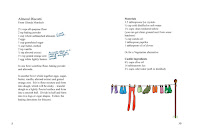The thing about a book, aside from the fact that you will still be able to use if after you've spilt coffee on it and it has been handed down from your great grandmother to you, is what is inside it. What's inside it makes it worth hanging onto when your great gran passes it on to you and your uncle Dwayne drank coffee on it the morning of his wedding and knocked over his mug in a nervous action checking on the ring in his pocket. I have been planning a book for the library where I work because we've got a little story and that little story grew a bit over the summer and I thought it should have a little book to go with the bits left over from the event and the legends that surround them.


The first bit is the sad bit. In June of 1948, a farmer, named Cecil George Harris, told his wife he was going out to do some work and he'd be home around 10pm. He did not arrive. Mrs. Harris went out and found poor George pinned in a nasty manner by his farm equipment. She got neighbours and they got George out, but two days later George gave it all up. When his tractor was inspected it turned out George had not been entirely idle during his hours of captivity. He had used his penknife to scratch a will into the fender of his tractor. That fender was used a court case about George's will and proved useful because everything did indeed 'go to the wife'. The tractor fender, now evidence pretending to be a tractor fender, was kept in the court house in Kerrobert.* Many years later the court house was closed and in a fit of keen preservation the fender was presented to the College of Law at the University of Saskatchewan. They dutifully built a lovely case and the fender was set up in the Law Library on display.
Until this summer when I took a phone call from the Discovery Channel.....
*The Kerrobert Court House is now used as the Town Hall and an art Gallery. And John George Diefenbaker, whose murder case seems to be responsible for its ghost, is a graduate of the University of Saskatchewan College of Law and his portrait hangs over my desk and haunts me.











